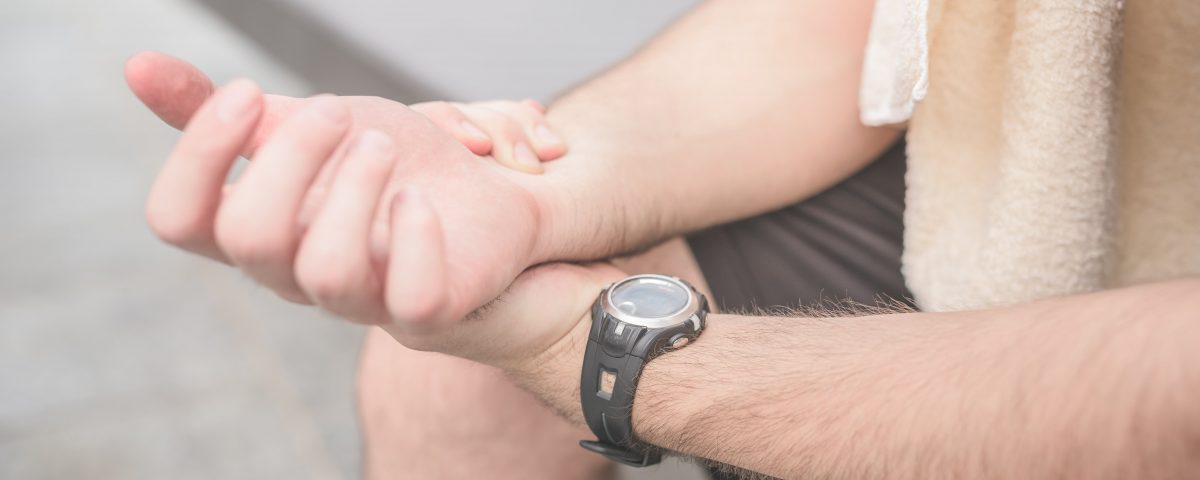De Quervain’s Tenosynovitis

Tennis Elbow
August 27, 2020
Greater Trochanteric Pain Syndrome
October 2, 2020De Quervain’s Tenosynovitis

De Quervain’s Tenosynovitis
What is it and where does it come from?
The name is a bit of a mouth full, but you may have heard of this injury by one of its many other names including: texting thumb, gamer’s thumb, mother’s wrist, or mummy thumb. As seen by the variety of attributed names of this injury we can see that there is a wide variety of causes. The injury itself presents as pain to base of the thumb where is meets the wrist. Pain comes on with loading or overuse of this side of the wrist especially in a stretched position. As the thumb and wrist continue to be overloaded the tendons in this area become swollen and gradually thickened until almost all use of the wrist become painful!
When patients present to the clinic few are sure how or where they acquired the injury. Most report that they started to become aware of the wrist weeks or even months earlier and by the time that they came to seek care the pain was constant. This injury is insidious and worsens gradually. Whether you are a tradesman working in an awkward position, a gamer playing longer or more frequently, or a new mum dealing with new loads on the body from your little person, the increase in load going through the joint is to blame.
Rehab for De Quervain’s Tenosynovitis
The first step on the road to recovery is to stop what it is that is causing you pain. This is easier said than done, considering a new mum can hardly just leave baby somewhere to give her wrists a rest. The gold standard of treatment is to passively unload the thumb and wrist, in most cases this is going to look like splinting or taping the wrist in conjunction with anti-inflammatories. In more severe cases a cortisone injection to the site followed by a made to fit thermal plastic splint may be required. By giving your thumb and wrist the time of day to settle and heal it can finally start to recover.
From here it is about fixing the actual cause of the injury. The definition of insanity is repeating the same action and expecting a different result. After a period of rest and healing, if you were to return to previous habits of the thumb and wrist, you are quickly going to find yourself experiencing the same pain. You got yourself into this mess, you most certainly can get yourself out.
For the mothers out there
The average weight for a newborn baby is 2.7-4kg. You will have quickly realised just how much you are picking up and putting down your baby. From bassinet, change table, tummy time, pram, car seat you will be reaching, lifting and loading through that wrist. For a body new to this, that load is an incredible increase that few are ready for and unfortunately your baby is only going to get heavier.
Change to technique and your lifting habit is crucial to keeping your wrists safe. A simple change in the angle of your thumb and hand will shift the weight away from your wrist and allow your biceps to do more of the work. Bracing works wonderfully here has it literally forces you to adopt the correct position and taping will tug if you start to load into an incorrect position.

Strengthening wrist and thumb
Strengthening exercises are the next step to ensure that you never experience this injury again. Not only will get the muscles around the area get stronger, but they will reinforce the good habits you have developed for positioning the wrist correctly. For the mums out there, as your baby gets heavier you will be more than able to manage their demands on your hands! These exercises range from simple and stable to dynamic and quite challenging! Your physiotherapist will be able to tailor these to you perfectly for the stage of rehab you are up to.
